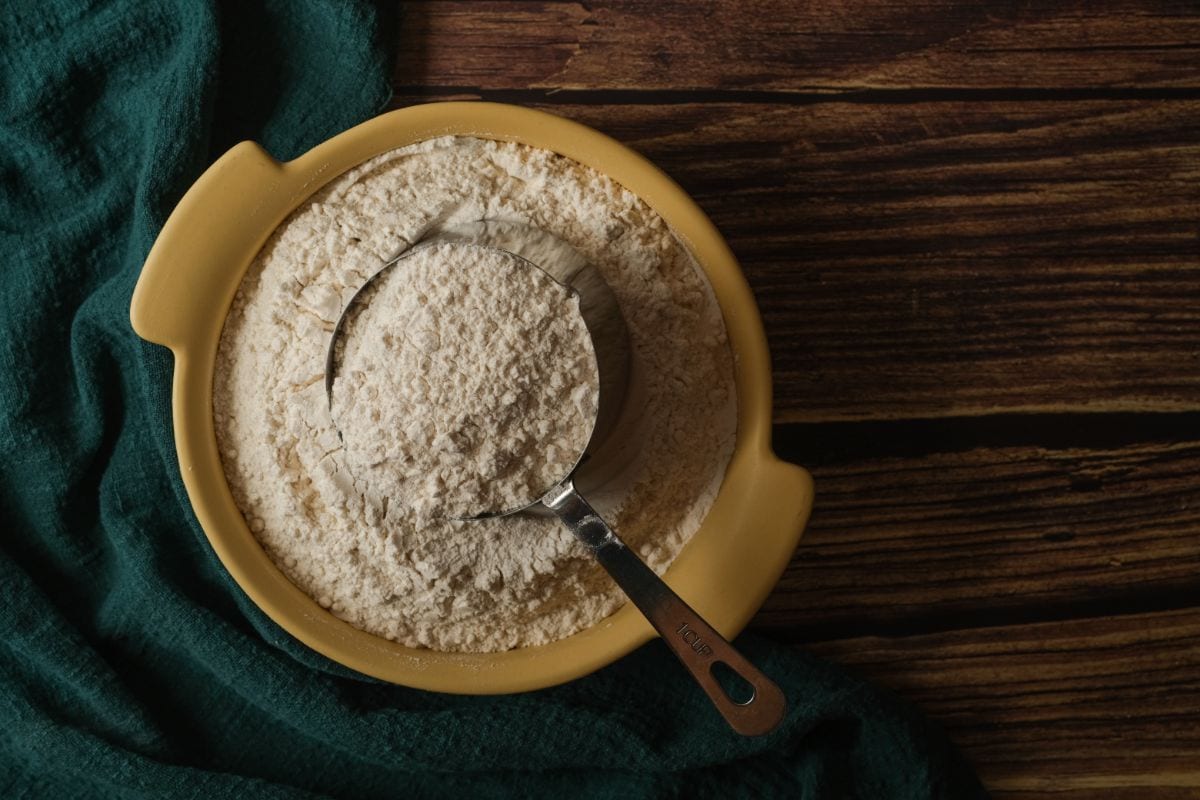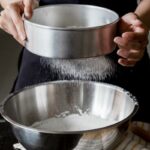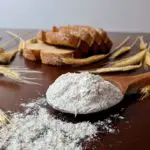There’s certainly no shortage of types of flour someone can use to make their favorite desserts and treats.
From bread flour and cake flour that are dedicated towards specific recipes, all the way to all purpose flour which can be used to make virtually any baked goods taste soft and delicious.
You may have also heard of people using plain flour when the recipe calls for a light and crumbly texture to be added to some pastries or biscuits, but how are these two commonly used ingredients different?
Keep reading as we take a look at these two types of flour, what they are used for, and how similar they really are.
How Different Are All Purpose Flour And Plain Flour?
While many people will say that plain flour and all purpose flour are exactly the same, this isn’t necessarily true, with the biggest difference coming in where the flour is sourced.
All purpose flour is the name used in the U.S, along with being called ap flour, and plain flour is the name used in the U.K, and while both these types of flour are similar, plain flour is milled from rye grains and wheat which can grant it more of a neutral taste that can make it a little less suitable for making bread.
All purpose flour on the other hand goes through a different milling process and is sourced from either hard red wheat or a combination of hard and soft wheat which can work better when you want your food to have a fine texture that can also be a little flaky, such as for pie crusts.
These differences can also mean that all purpose flour, or ap flour, is referred to more often as a strong flour, or at least a strong bread flour since that is what it’s most widely used for.
Other then these slight differences however, both these types of flour also share quite a few similarities that make them very interchangeable.
Similarities Between All Purpose Flour And Plain Flour
Because of the sheer amount of similarities between the two, such as their texture, both these different types of flour will work as a suitable substitute for one another.
Both types of flour will grant a dessert a soft, crumbly and slightly chewy texture which makes them great for the same types of foods.
They are also good substitutes because they are both medium to low protein flour, which is great for making tender cookies and pastry crusts, something cake flour is also good at since it is so low in protein.
The gluten content in both these flours is also incredibly low, as opposed to pastry flour which uses its high gluten content to give baked desserts a bit of a finer texture with slightly more resistance.
Similar Flour To All Purpose And Plain Flour
If you don’t currently have these types of flour handy, or if you want a flour that gives you a slightly different texture or taste when you come to use it, the good news is there are a few other similar types of soft flour you can use as tasty substitutes.
Here are some of the most popular and most common types of flour that can also be used to make similar delicious treats:
Self-Rising Flour
Self-rising flour is quite a unique type of flour since it contains a leavening agent and is also infused with added raising agents such as baking soda and baking powder which makes it the perfect ingredient for making desserts nice and fluffy, while still lending them a softer texture, making it an excellent choice when you need to substitute all purpose flour or plain flour.

Cake Flour
Cake flour is known for being a low protein flour with it only containing 5% protein along with containing low amounts of gluten, making it perfect for a pound cake, cake flour cakes, or pastries with a slightly smoother and creamier texture than regular flour.
Cake flour is also known as completely white flour with its very vibrant and bright appearance, and it can also commonly be referred to as cream flour.
Pastry Flour
Pastry flour is the best flour to use for baked goods that taste best with a slightly finer texture that are a little crunchier to bite into such as muffins and cookies.
Pastry flour is known for having a slightly darker appearance than other flours, being more off-white, however it is still a low-protein flour made from soft white wheat or soft red winter wheat that still works as a great all purpose flour substitute.
Wheat Flour
There are a few different types of wheat flour with them all coming from grinding different parts of the wheat grain.
Brown flour comes from only the germ and bran while white flour comes from only the endosperm part of the wheat which also contains the greatest share of protein.
Whole grain flour is then created from all three of these compartments, giving it a very distinct taste and making it more nutritious than the other two flours.
Bread Flour
If you’re looking for a higher protein flour to replace all purpose flour, bread flour contains a much higher protein content, often between 12% and 15%.
This makes it ideal for when you want your food to have a strong crumb and chewy texture such as pretzels or pizza dough.
Almond Flour
This entirely gluten free flour is mainly used to substitute wheat flour within a recipe, and because of its high-fat content, it works perfectly for making baked goods soft and moist when the recipe calls for it.
While there are several gluten free flours that can all differ in taste and texture depending on the brand, almond flour is most popular because it’s packed full of nutrients and low in carbs, along with being an excellent way to make some baked goods taste even sweeter.
Whole Wheat Flour
Whole wheat flour is usually mixed in with other bleached flour to pack it full of protein, fiber, and vitamins.
While it is considered a medium to high protein flour, it still works as an ingredient that you can switch out for really any flour type, whether it’s baking flour, self raising flour, corn flour, or even rice flour.
Summary
While there are some slight differences in how they are made, and their specific uses, all purpose flour and plain flour can still be switched out for one another in many of the same delicious baked recipes.










